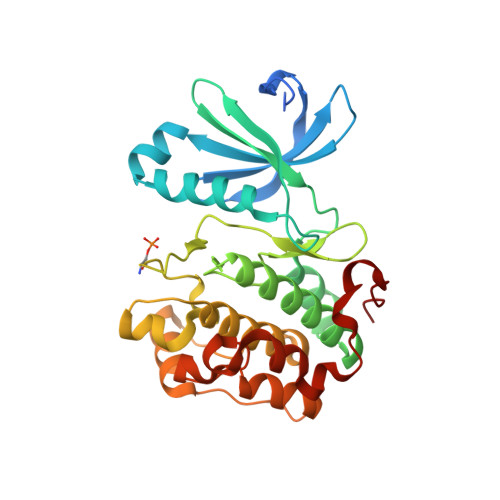Discovery of novel 7-azaindoles as PDK1 inhibitors.
Wucherer-Plietker, M., Merkul, E., Muller, T.J., Esdar, C., Knochel, T., Heinrich, T., Buchstaller, H.P., Greiner, H., Dorsch, D., Finsinger, D., Calderini, M., Bruge, D., Gradler, U.(2016) Bioorg Med Chem Lett 26: 3073-3080
- PubMed: 27217002
- DOI: https://doi.org/10.1016/j.bmcl.2016.05.005
- Primary Citation of Related Structures:
5HKM, 5HNG, 5HO7, 5HO8 - PubMed Abstract:
A combined screening strategy using HTS together with focused kinase library and virtual screening led to the identification of diverse chemical series as PDK1 inhibitors. We focused our medicinal chemistry efforts on 7-azaindoles with low micromolar IC50s (e.g., 16: IC50=1.1μM) in the biochemical PDK1 assay. Our structure-guided optimization efforts considered also PDK1 X-ray structures with weaker binding fragments and resulted in 7-azaindoles with significantly improved biochemical PDK1 potency in the two-digit nanomolar range. However, the most potent analogues only showed moderate activities in a cellular mechanistic assay (42: IC50=2.3μM) together with either low microsomal stability or low permeability. The described structure-activity relationship together with PDK1 X-ray structures and early ADME data provided the basis for our subsequent hit-to-lead program.
Organizational Affiliation:
Merck KGaA, Biopharma, Global Research & Development, Frankfurter Str. 250, D-64293 Darmstadt, Germany.

















